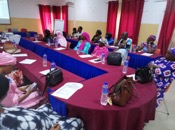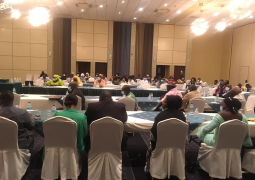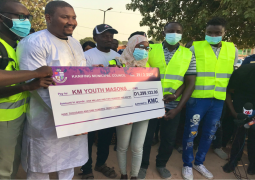
Against this backdrop, the Department of Fisheries convened three day training for stakeholders from 28-30 October 2022, at NaNA on proper fish handling, processing, preservation and distribution techniques along the fisheries value chain. According to fisheries officials, the objectives are to raise awareness and increase understanding on post-harvest losses, improve technical knowledge and skills of fish business operators in fish handling and preservation for improved fresh fish marketing among other things.
It is estimated that about 200,000 people in The Gambia depend on artisanal fisheries for their livelihoods.
In her closing remarks at the training, the director of the Department of Fisheries Anna Mbenga-Cham, said the government of The Gambia attaches a great importance to the development of the sector because of its actual and potential contribution to national socio-economic development and growth. She pointed out that the sector provides food, creates employment, generates revenue and foreign exchange earning among other things.
According to the director of fisheries, The Gambia and the European Union (EU) signed a six-year sustainable fisheries partnership agreement to strengthen cooperation in the development of sustainable fisheries, fight against illegal unregulated and unreported (IUU) fishing. This promotes the blue economy including value chain, aquaculture, and supports the development of the artisanal or small scale fisheries sector in The Gambia.
“The protocol to the agreement involves an annual financial contribution from the EU to The Gambia including a portion representing compensation for access of EU vessels to fish in the fisheries waters of The Gambia,” she said.
Madam Mbenga-Cham said the state of hygiene at fish landing sites particularly in coastal communities, and around fish processing sites leaves much to be desired. “Fish handling and sanitary conditions are inadequate and affect the safety and quality of products,” the director added.
The accumulation of waste at processing sites is a sanitary problem. According to fisheries officials, waste attracts and provides breeding grounds for insects with consequent infestation of products by these insects.
Due to limitations in quality and food safety standards and control, there is restricted access of products to make, especially the traditionally processed products from landing sites to export markets with strict requirements on food safety and quality. Fish spoilage due to poor handling and hygiene results in losses and reduced value of product.





